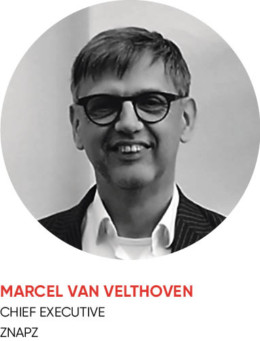 Asset managers involved in the maintenance and improvement of rail networks usually have a mechanical engineering background, and are accustomed to thinking in terms of decades. Often their minds are focused on whether to recommend extending the life of surprisingly resilient infrastructure built in the 1900s.
Asset managers involved in the maintenance and improvement of rail networks usually have a mechanical engineering background, and are accustomed to thinking in terms of decades. Often their minds are focused on whether to recommend extending the life of surprisingly resilient infrastructure built in the 1900s.
There is still that pressure, but it is being compounded by increasing demands from politicians and regulators who expect operators of rail networks to respond rapidly to changes in travel patterns and different fiscal regimes. In addition, customers’ expectations are much higher.
Seamless 4G mobile phone and wi-fi networks are becoming the norm, and more customers are expecting this level of service even in tunnels. The opportunity to capture data from social networking platforms and integrate it into other entertainment technologies and telematics systems is also offering opportunities for operators of rail networks and train companies to add value.
Enterprise asset management systems that are always connected and can interrogate and model customer behaviour, then reconfigure the data to create new products and services have been available for many years in manufacturing. Now there is an opportunity to do that in the rail industry.
We are entering a new era of asset management. We are achieving insights into asset behaviour that were not available two or three years ago. We are also getting better at analysing data. A number of emerging competences are helping asset managers in the rail industry do that. These are the ability to process big data and cognitive computing. It is impossible to manage assets today, especially in the rail industry, without them.
ZNAPZ recommends rail asset managers decide which applications of IoT technology should be exploited first
ZNAPZ believes the way to harness these competences and maximise the value of assets is to focus on three key areas. The first is integration, the second is the capability to manipulate advanced information systems and the third is that your organisation should be able to ask the right questions in advance.
There are two types of integration – commercial and technical. The latter is often easier to achieve because it usually depends on sufficient investment in hardware and software. The former is a major challenge in many companies because it involves cultural changes, and a willingness to share data and appreciate the benefits of seamless use in the whole organisation.
The second area or aspect involves collating data. About 90 per cent of all data generated by devices such as sensors on equipment, smartphones, tablets, connected vehicles and appliances is never analysed or acted on.
This is the internet of things or IoT. It is an integrated fabric of sensors, devices, data, connections, processes and people.
According to the Ovum white paper, Harnessing Data in the Internet of Things: “Up until now, big data has largely been made up of human-generated transactional and interaction data that is held in relational databases. As the deployment of IoT networks continues to grow, the balance will shift firmly in the direction of very large volumes of data in the form of the sensor readings, alerts and events that are generated by connected devices.”
The third area is to ask the right questions in advance. IoT offers so many opportunities that ZNAPZ recommends rail asset managers decide which applications of the technology should be exploited first. For example, an IBM blog quotes Eurotech, a supplier of embedded boards and systems: “Social networking apps could be used in conjunction with passenger loading information from trains to help spread demand peaks.”
The potential is enormous. The only limit is the breadth of your imagination.
For more information please www.znapz.com
